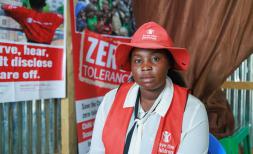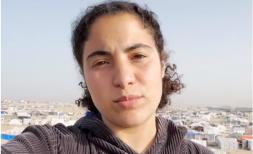Caught in the crosshairs of conflict and coronavirus
Children's safety and protection is a key pillar of Save the Children's Agenda for Action to #ProtectAGeneration throughout the coronavirus pandemic.
Last week, the killing of 24 women and children, including two new-born babies, in the maternity ward of a hospital in Kabul, Afghanistan, broke through the coronavirus din and reminded us of the horrors of conflict that remain a daily reality for millions across the globe.
Elsewhere, without hitting the headlines, the numbers of children killed or maimed in conflict this year continued to rise.
In the past week alone, three children were injured, and one killed as an artillery shell pierced the protective walls of their home in Yemen. In the Democratic Republic of Congo at least 20 civilians, including children, were massacred by an armed group in the north-east of the country. In the occupied Palestinian territory (oPt), a teenager's future was cruelly extinguished as he was shot dead during a raid of the Al-Fawwar refugee camp.
Coronavirus or not, for children living in conflict-zones, the daily horror of war continues unabated. The virus is now one more thing to fear. The latest deadly threat to add to a long list that already includes gunfire, shelling, air-raids, sexual violence, abduction and being forcibly recruited.
NO ONE IS SAFE UNTIL EVERYONE IS
Coronavirus knows and respects no borders. No-one one is safe from this crisis until everyone is.
Ultimately our collective response to the global pandemic will only be as strong as our protection for the most vulnerable.
Left unchecked warzones across the globe will become tinderboxes for the virus. The consequences of community transmission in countries reeling from years of fighting will likely prove catastrophic.
Scenes beamed into our living rooms on the late-night news depicting row after row of pre-dug graves in countries like Yemen should be enough to snap us all into action. If not, then COVID-19 threatens to be the final nail in thousands of children's coffins.
WHERE ARE OUR LEADERS?
Unfortunately, COVID-19 is not just exacerbating the pre-existing vulnerabilities of millions of the most vulnerable. It is also threatening to pull apart the very multilateral systems put in place to solve international problems and maintain peace and security.
75 years ago this October, the UN was born out of the embers of the devastation of World War Two. Back then, war was considered enough of a global challenge that it needed global governance to tackle it.
Yet now while the humanitarian sector steadies itself for dealing with the virus in countries with decimated heath systems, weak governance and an erosion of basic services, we are left clinging to the hope that the realignment of politics can tackle the problem at its core.
Almost two months have passed since the UN Secretary General António Guterres called for a global ceasefire. Guterres asked warring parties around the world to lay down their arms and refocus their efforts on mitigating and suppressing COVID-19.
It was a bold call and we have seen momentum growing with eleven countries having so far 'responded' to the call. On the ground however the real picture appears far more mixed.
While progress is encouraging at local levels, at the global level the UN Security Council stands accused of watching from the side-lines as this crisis unfolds.
Even during the worst tensions of the Cold War resolutions and agreements were found when it came to global health, including a consensus around polio vaccinations.
If the Security Council fails at this most critical time history will surely judge them harshly.
It is not hyperbole to say that millions of children's lives in some of the most fragile contexts across the globe depend on it.
AN EXTRAORDINARY MOMENT REQUIRES EXTRAORDINARY ACTION
In the short term a global ceasefire would put an end to the daily drumbeat of death and destruction. Critically, it would allow life-saving aid to reach the most vulnerable communities and support them to mount an effective response to coronavirus.
Make no mistake, even if a UN Security Council Resolution on COVID-19 was adopted there would still be a huge amount of work to do. Yet as we're seeing on a daily basis, there are energised communities and organisations all over the world ready to step up if they are given the opportunity.
Recently, in a crowded camp in Idlib, North West Syria, a fourteen-year-old boy told our team, "We're used to the war now. Even when it hits nearby, we hide in caves. But with this virus, we can't hide." With these words he captured the fears of 149 million children living in high-intensity conflict zones around the world.
For him, and the millions of children currently caught in the crosshairs of conflict, a genuine pause in fighting could provide the respite they so desperately need and stop them becoming just another sad statistic in the daily news.
All over the world, Save the Children is rapidly adapting our existing work whilst preparing for outbreaks of coronavirus in countries with limited capacity to respond.
Find out more about Save the Children's coronavirus response.







